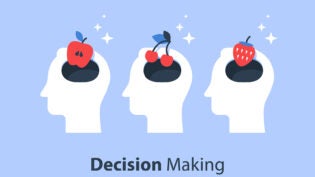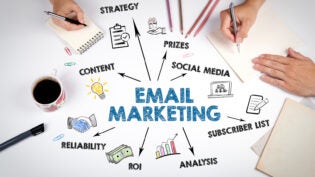Think Like a Media Company
By: Bonnie Moss

Gaining the attention of your customer base today is harder than ever. That’s not some handwaving statement, either, but one backed by hard research.
For instance, take the results of a study of media and ad exposure done by Media Dynamics, Inc. It looked at the exposure people experienced to ads – in other words, the number of ads someone could have seen or heard – and measured the difference between that exposure in 1985 versus 2014. What they found was that the average person was exposed to roughly 2,000 ads a day 30 years ago. Today? Five thousand or more a day.
The important phrase in that study is that these were ads that someone could have seen or heard. But when it comes to digital ads, viewers can still opt out of them. The PageFair 2017 Global Adblock Report says that 615 million devices now use some form of ad blocking.
You may be committing dollars to digital campaigns, but that doesn’t mean your message is being seen.
Savvy companies have switched tactics and moved from one to many advertising – or outbound marketing – to inbound. Instead of blasting a message out to the world, they are carefully crafting messages meant to draw the attention of their target customer.
But in a world with so many distractions, how does a company catch and keep that attention? Instead of shouting its brand message, it provides genuine, original content that speaks to its target audience and is useful to them. It doesn’t matter if that message is a blog, a podcast, or a video. What matters is that brands think like a media company and provide quality content that the audience wants.
Learning from the Experts
When it comes to transforming your brand into a media company, examples speak louder than words. Studying brands that have successfully made the leap can help guide your strategy.
Net-a-Porter
When looking for a brand to emulate, Net-a-Porter is a great option. It knows its audience and produces a lot of rich content for platforms like Twitter, where it is nearing one million followers, and Instagram, where over 2 million users follow the brand.
But the company takes it one step further with its online magazine, The Edit. The site includes articles on fashion, beauty, and fitness, and has a feature called “Incredible Women” that celebrates women across the professional spectrum, including artists, actors, athletes, and activists. Understanding its diverse audience, the publication offers content as both written pieces and videos.
Dove
Dove is a beauty company that uses the power of its name to challenge the concept of self-image. Its goal with the Self-Esteem Project is to provide content that empowers young girls and their families to explore their self-worth beyond their reflection.
The site offers interactive tools and resources for parents, teachers, mentors and youth leaders to help raise the body confidence of girls. There are also articles giving information and guidance on spotting eating disorders, the effects of reality TV, and improving communication between mothers and daughters.
The brand also puts social media to work for it, with campaigns like #MyBeautyMySay that combined online and offline advertising with a social media hashtag to bring awareness to the sexism that female athletes face.
DIY Media
Creating content that draws your audience in requires a shift in brand thinking. To pursue a content-based marketing and promotion strategy, you have to stop thinking about the message that you want the audience to hear and start thinking about what it is that will interest them.
Understand Your Audience
The first step is to understand who you are talking to. Who is your target? What are their interests? What information can you give them that will make their lives better or their job easier?
Each company has insights into what their customer needs. Shift your thinking from selling a product or service to providing something that enhances the lives of your customer through your expertise. Is there a non-obvious way to use your product that addresses a specific need? Does your target audience have questions that your company’s experience can help answer?
Providing content establishes authority and thereby establishes a trust relationship with the customer. Trust means they are more likely to follow your advice once you’ve established your expertise, something you can only do by sharing your thoughts and experience.
Commit
For an effective content marketing strategy to work, you need to commit to it as fully as you would to outbound advertising. That might mean committing time for your experts to share their knowledge in addition to their usual tasks. That might mean committing dollars to have a content expert – a writer, a videographer, or a podcast editor – help you prepare the right content.
Whatever committing means for you, make sure you understand your limits and commit to that point. If you start out like gangbusters and publish a podcast post a week for six months, but nine months down the road you are lucky to get a podcast out once a month, you’re doing more harm than good. Instead, you’ve taken the relationship that you’ve built with your audience – where you provide insights and they provide attention – and shown that you aren’t willing to hold up your end of the bargain.
Use the Right Media
Many companies are limited in the commitment that they can make. As long as you’re consistent in your commitment, it’s ok if you can only create a blog post, or a video to share your knowledge.
It’s ok, as long as that is the medium that your audience is willing to use, that is.
If you set your sights on creating hour long videos to impart deep, meaningful insights, but your audience doesn’t have the attention span for a video that is that long, you’re wasting money. If you create regular blog posts, but your audience isn’t apt to sit and read, you’ll end up frustrated by the lack of traffic your posts get.
Before committing to a specific media to share your message, spend some time doing your research on what your audience craves. You could also put out a few test projects – a few blog posts, videos of different lengths, a podcast or two – and compare the results.
But don’t fall prey to being in love with an idea. Just because you enjoy creating a podcast doesn’t mean your audience will enjoy listening to it. And above all, inbound marketing is about creating content your audience will love and will seek out.
Broadcasting your message to the modern world may fall on deaf ears. Between attention overload, adblockers, and limited time, customers want information that will help them, not messages that talk at them.
Creating authoritative content, in a medium that your target audience will use, and fulfilling the promise of producing that content regularly will pay off for your company in customer attention and increased sales.
2072 Views














